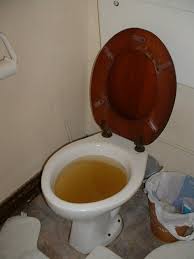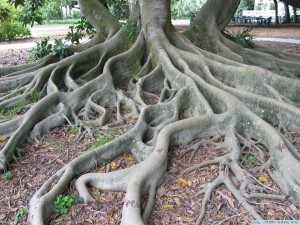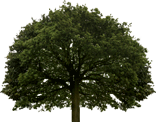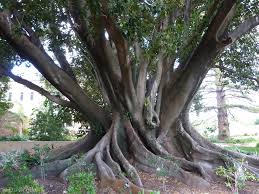Archives
Why trees choose sewer over stormwater pipes
Trees are more likely to grow into sewer pipes than stormwater pipes.
Every day we use our plumbing sending that water and fertiliser combination along the pipeline for the trees and their root systems to drink their fill. BUT, stormwater pipes only carry water when it rains, which in this country is fairly unreliable.
If I was a tree and had a choice of putting my roots into a sewer pipe or a stormwater pipe, I would choose the sewer pipes because every day, as regular as clockwork, I will be fed and watered. If I chose the stormwater pipes, I may die of thirst!
Tree roots in drains start out small
Do you know how small tree roots are when they enter your sewer drains?
Believe it or not, the tree roots that enter your drains through the small cracks in the pipe joints are finer than the hairs on your head or the purest Australian wool.
Once they find their way into the cracks and pipe joints they multiply.
When will you do my Vaporooter?
I just had a phone call from Deborah wanting to know when we are doing her annual Vaporooter treatment.
Deb said “You usually come at the end of October. You’ve been coming every year since 2010.”
“Oh, my pipes aren’t blocked but, I don’t want to go back to those days with horrible sewage overflowing and my toilet won’t flush” she said.
Deb has a large fig tree growing on the nature strip at the front of her home.
Don’t worry. We’ve got you covered Deborah
Apologies for the wind noise at the start of this 2.01 min clip.
How tree roots get into pipes #2
In my last post I described how tree roots can easily travel through soil that has been loosened by excavation to accommodate your pipe installation.
Do you know why tree roots grow in sewer pipes from the top of the pipe joints?
Condensation is formed when we run water from our water pipes, through our drains; especially when we have a hot shower, wash our clothes or dishes in hot or warm water.
When the warm water enters the drains buried in the cold earth, condensation is formed, and it gathers on the inside top of our sewer pipes and drains.
The tree roots moving through our already loosened soils can now move along the top of the pipelines and are attracted to the warmth and moisture inside. All they need now is a way into the pipe.
This 1.58sec clip shows how.
Tree roots chase liquid gold in drains
Did you know tree roots chase the liquid fertiliser in sewer drains?
That’s because the waste water running through your pipes is a constant source of moisture and nutrients.
In our dry continent a sewer pipe is an easy target for a tree root system that plays the long game.

Most of us use our plumbing every day. When we brush our teeth, wash the dishes and of course shower and flush our toilets, we send the waste water off to the sewerage treatment works.
We are also sending liquid fertiliser along the pipes for our trees to feast upon.
That waste water usually runs along the bottom 1/3 of the pipe.
More on that later….
Cutting tree roots makes them grow thicker and stronger
Did you know when you cut tree roots from your blocked sewer pipes, they grow back thicker and stronger?
You see, getting a blocked drain specialist to cut tree roots with high-pressure water or an electric eel is like pruning your hedge or rose bush, it encourages tree root regrowth.

Over a long period, when the tree roots in your sewer pipes grow back thicker and stronger, it reduces the time between cuts. And blocked drains occur more frequently!
Eventually, the roots that grow in through the small cracks and joints in your sewer pipeline will begin to damage or break your pipes.
So is the only remedy to dig up that section of pipe and carry out expensive repairs?
No! Find out more about Vaporooter.
I don’t want to live like this!
Sonia, from Bronte asked, “What does your Vaporooter Guarantee actually mean?” You could hear the fear in her voice!
Sonia lives on the first floor of an 8 storey block of home units. “About every 3 months we get a blocked drain caused by tree roots in the pipes under our building.”
“Depending on the type of tree, that’s not unusual,” I said.
“You don’t understand,” she said as her throat began to tighten. “When we get a blockage, all the sewer and waste water flushed by the residents on the 7 floors above, hits the blockage in the carpark and backs up through the floor drain in my bathroom.”

“Ouch, Do you mean everything?’
“Yes, everything. Poo, condoms, tampons, cotton wool buds, toilet paper. It’s absolutely disgusting. It makes me want to throw up just thinking about it, running from the floor drain in my bathroom, out the door and all over the hallway and lounge room carpet.”
“But, why are you so upset now?” I asked.
“It’s been 4 months since it happened, so it’s gonna happen again soon. I don’t want to live like this!”
I actually had this conversation on April 8th 2016.
The Body corporate committee are getting other opinions on Tree root treatments for drains.
I feel for Sonia.
Vaporooter Helps Strata Prevent $40,000 Sewer Replacement

Location: Clovelly, Sydney
Occupants: Mostly women over 40. 2 with teenage children.
Home: Block of four 2 bedroom flats 2 up, 2 down circa 1920
Trees in Vicinity: Tree lined Street, many large Hills Weeping Fig (Ficus Microcarpa Var.)
In total we have billed this client $9,772.00 for tree root cutting and repairs.
In March 2010, they finally indicated their interest in applying Vaporooter to control the tree roots in and around their sewer pipes.
The quote to apply Vaporooter is $1,586.00. This comes with a 12-month Guarantee.
The estimated cost to renew this sewer around both sides of the building and out to the sewer main in the street is estimated to be an astonishing $40,000.00.
The roots from the trees in this street are widespread and we have attended to blocked drains in houses and unit blocks up and down the street. The roots are getting stronger and without Vaporooter, a full sewer replacement will be the only (costly) alternative.
Some of the residents have indicated that instead of applying Vaporooter, they will lobby the Council to cut down the trees. That would change the entire streetscape and severely diminish their property value above the $40,000 sewer replacement and well beyond the preventative Vaporooter solution that is guaranteed to solve the problem.
This beautiful period block of flats, a 5 minutes walk from the beach is on a street lined with Hills weeping fig trees.
You know the kind; they produce the most beautiful summer shade with birds attracted to the fruit. The branch canopy stretches right across the street. But, so does the root system of these magnificent specimens.
We were first called to this property to attend a blocked drain in May 2005. The problem was tree roots from the specimens on the public footpath at the front of the property. The ground floor flats were the worst affected. Not only did their toilets back up when they flushed them, but when the flats upstairs flushed their toilet, that also came up and sometimes overflowed in the ground floor toilets.
That’s called The U-Tube (poo-tube) effect!
We recommended to the owner occupiers that Vaporooter would control the tree roots in their sewer. They declined to take up the offer.
In the 5 years since, we have attended to this sewer blocked by tree roots 7 times. We have carried out excavations to repair sections of drainage damaged by this aggressive tree root system. This unfortunately includes costly and inconvenient weekend and after hours callouts.
How can tree roots destroy pipes?
Tree root cells, which can be microscopic in their first stages of development, look for warmth and humidity so that they can mature.
In their search, they are attracted to and discover drain lines, which they can penetrate through extremely small openings in the pipe joints and gradually grow inside them.
As the tree roots mature inside the pipes, they create blockages when waste water is flushed through them.
Now, one of the least efficient methods of unblocking the pipes is cutting the roots. This “pruning” action actually leads to a more vigorous tree root regrowth.
5 Ways to Prevent Blocked Drains
These simple measures will go a long way to prevent roots infiltrating and destroying your sewer pipes
-
- Use pipes made of Polyvinyl chloride (PVC) for new and replacement drains. PVC pipes are strong enough to repel the tree roots. Experts agree that PVC is the best material for reducing the risk of tree root blockages.
- Don’t plant trees near pipes. This seems simple enough, but many home and business owners don’t realize what constitutes as ‘near’ when we’re talking tree roots. Many Australian trees have roots that have an incredibly wide spread.
- Pick proper foliage. Eucalyptus, for example, can have root systems that spread out as little as 6 metres. Hills Weeping Fig, on the other hand, can have a root spread up to 60 metres.
- Maintain your pipes. Wear and tear, cracks, and leaks can cause nutrient-rich water to seep into the soil around your pipes. This attracts tree roots straight to your pipes.
- Routinely check and clear your sewer drain. Though roots can be attracted to any type of water-bearing line, they are most often lured towards sewer drains. An expert plumber and drain cleaner can come by and clear roots out of your pipes before they become a big problem.
Compare Vaporooter and Stop Tree Roots in Drains.


